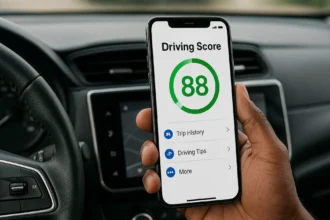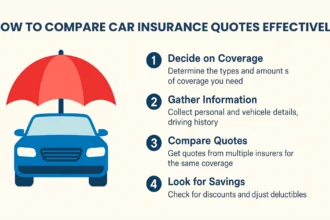Introduction: The Path to Financial Freedom
Financial independence represents the ultimate financial goal for many Americans—having enough resources to live comfortably without being dependent on a regular paycheck. In today’s economic landscape, achieving this freedom requires strategic planning, disciplined execution, and a clear understanding of personal finance fundamentals. This comprehensive guide explores proven financial independence strategies that can help you build wealth, create passive income streams, and potentially retire earlier than traditional timelines suggest.
The quest for financial independence isn’t merely about accumulating wealth—it’s about creating freedom of choice, reducing financial stress, and building a life where money serves your goals rather than dictates your decisions. Whether you’re aiming to retire early, transition to more meaningful work, or simply gain greater control over your financial future, the strategies outlined in this guide provide a roadmap to help you achieve your version of financial independence.
Understanding Financial Independence: Definitions and Approaches

What Is Financial Independence?
Financial independence means having sufficient income from sources other than active employment to cover your living expenses indefinitely. This income typically comes from investments, savings, passive business ventures, or other assets that generate returns without requiring your direct, ongoing labor.
The concept goes beyond simply having money—it represents having enough resources to maintain your desired lifestyle without being forced to work for income. For some, this means early retirement; for others, it means the freedom to pursue passion projects, start businesses, or work on their own terms without financial pressure.
The Financial Independence Number: Calculating What You Need
Before implementing financial independence strategies, you must determine your “FI number”—the amount of money you need to have invested to generate enough passive income to cover your expenses indefinitely. The most common formula uses the 25x rule:
FI Number = Annual Expenses × 25
This calculation is based on the 4% rule, which suggests you can safely withdraw 4% of your portfolio value annually with minimal risk of running out of money. For example, if your annual expenses are $60,000, your FI number would be $1.5 million.
However, this traditional calculation may need adjustment based on:
- Your intended length of retirement (especially for early retirees)
- Your risk tolerance and investment approach
- Healthcare costs, which can vary significantly
- Inflation expectations
- Your desired lifestyle and spending patterns
Many financial experts now recommend using a 3-3.5% withdrawal rate for early retirees, which would increase the multiplier to 28-33 times annual expenses.
Different Paths to Financial Independence
The financial independence movement encompasses several approaches:
Traditional FI: Saving 15-25% of income over a full career, typically reaching financial independence around conventional retirement age.
FIRE (Financial Independence, Retire Early): Characterized by aggressive saving (often 50-70% of income) to achieve independence decades before traditional retirement age.
Fat FIRE: Achieving financial independence with a higher standard of living, requiring a larger nest egg but allowing for more luxurious expenses.
Lean FIRE: Embracing minimalism and significantly reduced expenses (often under $40,000 annually), enabling financial independence with a smaller investment portfolio.
Coast FIRE: Saving aggressively early in your career until you have enough invested that, with compound growth and no additional contributions, will fund your retirement at traditional retirement age.
Barista FIRE: Quitting full-time work once you have enough saved to cover most expenses, then working part-time to cover the remainder while letting investments grow.
Slow FI: Prioritizing work-life balance along the journey, accepting a longer path to independence in exchange for enjoying more freedom during working years.
Core Financial Independence Strategies
Strategy 1: Maximize Your Earning Potential
While cutting expenses is crucial, increasing income often provides greater leverage for building wealth. Consider these approaches:
Career Advancement: Continuously develop marketable skills through certifications, advanced degrees, or specialized training. The Bureau of Labor Statistics consistently shows that advanced education correlates with higher earnings potential.
Salary Negotiation: Americans who negotiate salaries earn approximately $1 million more over their careers than those who don’t, according to research from Salary.com. Learn effective negotiation techniques and regularly research market rates for your position.
Side Hustles: Approximately 45% of Americans report having a side hustle, with the average side hustler earning an additional $1,122 per month, according to a 2023 Bankrate survey. Consider freelancing, consulting, e-commerce, content creation, or leveraging specialized skills outside your primary employment.
Career Transitions: Sometimes, changing industries or roles can significantly increase earning potential. Fields like technology, healthcare, and finance typically offer higher compensation than retail or hospitality.
Entrepreneurship: While riskier than employment, business ownership can potentially generate substantial income and create valuable assets. The Small Business Administration offers resources to help aspiring entrepreneurs start and grow businesses.
Strategy 2: Optimize Your Savings Rate
Your savings rate—the percentage of income you save rather than spend—is perhaps the most critical factor in determining how quickly you can achieve financial independence.
The Math of Savings Rates: A 10% savings rate typically leads to retirement in about 51 years, while a 50% savings rate can reduce that timeline to just 17 years, and a 75% savings rate can shrink it to only 7 years (assuming constant income and expenses, and investment returns averaging 5% after inflation).
Strategic Expense Reduction: Focus on optimizing the “big three” expenses that typically consume most of American budgets:
- Housing: Housing costs average 37% of the typical American’s budget according to the Bureau of Labor Statistics. Consider house hacking (renting out portions of your home), relocating to lower-cost areas, or downsizing.
- Transportation: Transportation expenses average 16% of American budgets. Strategies include living close to work, using public transportation, buying used vehicles, and maintaining them properly.
- Food: Food accounts for approximately 12% of American budgets. Meal planning, cooking at home, and strategic grocery shopping can significantly reduce this expense category.
Automate Your Savings: Set up automatic transfers to savings and investment accounts immediately after receiving income. Research shows that automatic savings systems increase average savings rates by 4-10 percentage points.
Avoid Lifestyle Inflation: As income increases, maintain your previous spending levels and direct additional income to investments. This “relative frugality” allows you to build wealth without sacrificing current comfort.
Strategy 3: Build a Robust Investment Portfolio
Investing wisely is essential for turning savings into sustainable wealth that can fund financial independence.
Tax-Advantaged Accounts First: Maximize contributions to accounts that offer tax benefits:
- 401(k)/403(b) Plans: In 2024, individuals can contribute up to $23,000 ($30,500 for those 50 and older). Employer matches represent immediate 100% returns on investment.
- IRAs: Traditional and Roth IRAs allow contributions of $7,000 in 2024 ($8,000 for those 50 and older). Roth IRAs offer tax-free growth and withdrawals during retirement.
- HSAs: Health Savings Accounts offer triple tax advantages for those with eligible high-deductible health plans. Contribution limits for 2024 are $4,150 for individuals and $8,300 for families, with an additional $1,000 catch-up contribution for those 55 and older.
Low-Cost Index Funds: Broad-market index funds consistently outperform actively managed funds over long periods while charging significantly lower fees. Vanguard’s research shows that reducing investment costs by just 1% can add 33% more to retirement savings over 30 years.
Asset Allocation: Develop an appropriate mix of stocks, bonds, and alternative investments based on your risk tolerance and time horizon. A common starting point is the “120 minus your age” rule for stock allocation, though many financial independence seekers maintain higher equity allocations due to longer investment timelines.
Real Estate Investment: Approximately 90% of millionaires invest in real estate, according to various wealth studies. Options include:
- Rental properties
- Real Estate Investment Trusts (REITs)
- Real estate crowdfunding platforms
- House hacking strategies
- Commercial real estate investment
Rebalancing and Tax-Loss Harvesting: Regularly review and rebalance your portfolio to maintain your target asset allocation. Use tax-loss harvesting to offset capital gains and reduce tax liability.
Strategy 4: Develop Multiple Income Streams
Diversifying income sources provides stability and accelerates wealth building.
Earned Income: Primary employment, side businesses, freelance work, consulting
Portfolio Income: Dividends, interest, capital gains from investments
Passive Income: Rental properties, royalties, digital products, online businesses
Semi-Passive Income: Businesses with systems and employees handling day-to-day operations
According to research from the IRS, the average millionaire has seven income streams. Building multiple income sources not only accelerates wealth accumulation but also provides security if one income stream falters.
Strategy 5: Minimize and Eliminate Debt
Debt represents a significant obstacle to financial independence, as interest payments divert cash flow from wealth-building activities.
High-Interest Debt Elimination: Prioritize paying off high-interest debts like credit cards (average APR of 23.39% as of April 2024) before focusing on investments. Each dollar used to pay off a 20% interest debt essentially earns a guaranteed 20% return—far higher than most investment opportunities.
Debt Snowball vs. Avalanche: Choose between the psychologically motivating debt snowball method (paying smallest balances first) or the mathematically optimal debt avalanche approach (paying highest interest rates first).
Leverage Good Debt Strategically: Not all debt is harmful. Low-interest debt used to acquire appreciating assets (like certain mortgages or business loans) can accelerate wealth building when used carefully.
Student Loan Management: For the approximately 45 million Americans with student loans, explore repayment options, forgiveness programs, and refinancing opportunities to optimize this debt.
Building Your Financial Independence Plan
Assessing Your Current Financial Position
Before implementing financial independence strategies, take stock of your starting point:
Net Worth Calculation: Assets minus liabilities equals net worth—the most comprehensive measure of financial health.
Cash Flow Analysis: Track income and expenses to determine your current savings rate and identify optimization opportunities.
Debt Inventory: Catalog all debts, including balances, interest rates, minimum payments, and terms.
Risk Assessment: Evaluate insurance coverage, emergency fund adequacy, and portfolio diversification to protect against setbacks.
Creating a Timeline to Financial Independence
Based on your starting point, savings rate, and investment approach, create a realistic timeline with milestones:
Phase 1: Financial Stability
- Build emergency fund (3-6 months of expenses)
- Eliminate high-interest debt
- Establish basic retirement contributions
- Secure appropriate insurance coverage
Phase 2: Accumulation
- Maximize savings rate
- Optimize investment strategy
- Develop additional income streams
- Build specific skills for increased earning potential
Phase 3: Pre-Independence
- Reach “Coast FI” status (investments sufficient to grow to support retirement without additional contributions)
- Test-drive planned retirement lifestyle
- Develop post-independence purpose and activities
- Create withdrawal and tax strategies
Phase 4: Financial Independence
- Execute withdrawal strategy
- Monitor portfolio performance
- Adjust spending as needed
- Pursue meaningful activities and relationships
Behavioral Finance and Psychology of Financial Independence
Success requires not just financial strategies but also psychological strength:
Value-Based Spending: Focus expenditures on what truly brings fulfillment while eliminating spending that doesn’t align with personal values.
Delayed Gratification: Research shows that the ability to delay immediate rewards for greater future benefits strongly correlates with financial success.
Social Comparison Management: Develop strategies to avoid the “keeping up with the Joneses” mentality that drives unnecessary spending and lifestyle inflation.
Identity Shift: Work to separate self-worth from income, job title, or material possessions—a critical psychological transition for those seeking financial independence.
READ ALSO: Top Financial Advisors for Tech Professionals in San Jose
Advanced Financial Independence Strategies
Tax Optimization Techniques
Strategic tax planning can significantly accelerate wealth building:
Tax-Efficient Fund Placement: Hold tax-inefficient investments (like bonds and REITs) in tax-advantaged accounts while keeping tax-efficient investments (like growth stocks and index funds) in taxable accounts.
Roth Conversion Ladders: Systematically convert traditional IRA/401(k) funds to Roth accounts during low-income years to access retirement funds before age 59½ without penalties.
Tax-Loss Harvesting: Strategically realize investment losses to offset capital gains and reduce taxable income.
Geographic Arbitrage: Consider residing in states with no income tax (like Texas, Florida, or Washington) or lower overall tax burdens to maximize after-tax income.
Healthcare Planning for Early Retirees
Healthcare represents one of the most significant challenges for those seeking financial independence before Medicare eligibility at age 65.
Health Insurance Options:
- Affordable Care Act marketplace plans (potentially with subsidies)
- Spouse’s employer coverage
- Part-time employment with benefits
- Health sharing ministries (though these carry additional risks)
- COBRA coverage (temporary bridge option)
Health Savings Accounts (HSAs): Beyond immediate tax advantages, HSAs can serve as powerful retirement accounts when allowed to grow and used for qualified medical expenses in retirement.
Medical Tourism: For significant procedures, medical care in countries like Mexico, Thailand, or Costa Rica can cost 50-70% less than in the United States while maintaining high-quality standards.
Geographic Arbitrage and Relocation Strategies
Housing costs vary dramatically across the United States, creating opportunities for strategic relocation:
Domestic Geographic Arbitrage: Moving from high-cost coastal cities to more affordable areas can reduce expenses by 30-50% while maintaining quality of life. The median home price in San Francisco ($1.3 million) is nearly four times higher than in Charlotte, NC ($340,000).
Remote Work Leverage: With the expansion of remote work opportunities, more Americans can earn salaries benchmarked to high-cost areas while living in lower-cost regions.
International Geographic Arbitrage: Countries like Portugal, Panama, Mexico, and Thailand offer significantly lower living costs and high quality of life, enabling “Fat FIRE” lifestyles on “Lean FIRE” budgets.
Asset Protection and Estate Planning
Protecting accumulated wealth becomes increasingly important as your net worth grows:
Insurance Coverage: Proper liability, property, health, and umbrella insurance protects against catastrophic losses.
Legal Entity Structures: LLCs, trusts, and other entities can shield personal assets from business and investment risks.
Estate Planning: Even for those with moderate wealth, proper wills, powers of attorney, and potentially trusts ensure efficient wealth transfer and protect heirs.
Real-World Implementation: Case Studies in Financial Independence

Case Study 1: High-Income Professional Path
Profile: Sarah, 32, physician earning $275,000 annually in Boston
Strategy Highlights:
- Maintained modest lifestyle despite high income, saving 45% of after-tax income
- Maximized tax-advantaged accounts including 401(k), backdoor Roth IRA, and HSA
- Invested primarily in low-cost index funds with 90/10 stock/bond allocation
- Purchased duplex, living in one unit and renting the other to reduce housing costs
- Paid off $200,000 student loans within five years through aggressive payment plan
Outcome: Projected to reach financial independence with $3 million invested by age 45, creating options to reduce work hours, focus on preferred medical specialties, or retire completely.
Case Study 2: Average Income, Extraordinary Savings Rate
Profile: Michael and Jessica, married couple earning combined $110,000 in Raleigh, NC
Strategy Highlights:
- Achieved 60% savings rate through thoughtful frugality and value-based spending
- House hacked by purchasing 3-bedroom home and renting two rooms to friends
- Utilized tax optimization including traditional 401(k)s and HSAs
- Built side businesses generating $25,000 additional annual income
- Maintained one paid-off vehicle and utilized cycling for most local transportation
Outcome: Reached financial independence with $850,000 invested by ages 41 and 39, allowing Jessica to leave corporate job for part-time nonprofit work and Michael to start a small business.
Case Study 3: Late Start, Accelerated Timeline
Profile: Robert, 45, divorced with two teenage children, earning $120,000 in Chicago
Strategy Highlights:
- Increased income through career change and targeted skill development
- Downsized housing and relocated to lower-cost suburb
- Focused on maximizing 401(k) catch-up contributions and backdoor Roth IRA
- Developed consulting side business leveraging industry expertise
- Created college funding strategy utilizing 529 plans and merit scholarship opportunities
Outcome: Projected to reach financial independence by age 58 with $1.2 million invested, significantly earlier than traditional retirement age despite later start.
The Role of Community in Financial Independence
Finding Your Financial Independence Tribe
The journey to financial independence can feel isolating in a consumer-oriented society. Building community support accelerates success:
Online Communities: Forums like r/financialindependence, ChooseFI, and the Bogleheads provide knowledge, motivation, and accountability.
Local Meetups: In-person groups focused on financial independence, investing, and entrepreneurship build deeper connections with like-minded individuals.
Accountability Partners: Regular check-ins with someone sharing similar goals can significantly improve follow-through on financial plans.
Family Alignment: Success rates increase dramatically when spouses and partners share financial independence goals and strategies.
Teaching Financial Independence to the Next Generation
Financial literacy represents one of the most valuable gifts parents can provide children:
Age-Appropriate Money Lessons: From basic saving concepts for young children to investment principles for teenagers.
Work and Entrepreneurship Exposure: Encouraging part-time jobs, entrepreneurial ventures, and money management from an early age.
Educational Investment Accounts: 529 plans, custodial IRAs, and UTMA/UGMA accounts provide both tax advantages and teaching opportunities.
Modeling Financial Responsibility: Children learn financial habits primarily by observing parents’ behaviors rather than through direct instruction.
The Future of Financial Independence in America
Economic Trends Affecting Financial Independence Strategies
Several economic factors are reshaping the financial independence landscape:
Gig Economy Growth: The expansion of flexible work options creates both opportunities and challenges for financial independence seekers.
Healthcare Uncertainty: Rising costs and policy changes make healthcare planning increasingly complex for early retirees.
Lower Expected Returns: Many financial experts project lower investment returns over the next decade compared to historical averages, potentially requiring higher savings rates or longer timelines.
Remote Work Revolution: Expanded location flexibility enables geographic arbitrage and lifestyle design previously unavailable to most workers.
Automation and AI Impact: Technological changes create both risks (job displacement) and opportunities (new business models) for those on the financial independence path.
Evolving Definitions of Financial Independence
The concept of financial independence continues to evolve beyond the traditional “retirement” model:
Mini-Retirements: Taking extended breaks throughout a career rather than a single permanent retirement.
Semi-Retirement: Reducing work hours or transitioning to more enjoyable, lower-stress work once basic financial security is achieved.
Portfolio Careers: Building multiple simultaneous income streams through various part-time roles, businesses, and investments.
Purpose-Driven Independence: Using financial freedom to pursue social impact, creative endeavors, or community building rather than traditional leisure.
Maintaining Financial Independence Long-Term
Withdrawal Strategies for Sustainable Income
Once financial independence is achieved, attention shifts to preserving wealth while drawing sustainable income:
The 4% Rule and Its Limitations: While the traditional 4% withdrawal rule provides a useful benchmark, many financial planners now recommend more dynamic approaches based on market conditions, especially for early retirees.
Bucket Strategies: Dividing investments into near-term (cash), medium-term (bonds), and long-term (stocks) buckets to provide both security and growth.
Variable Withdrawal Methods: Adjusting spending based on portfolio performance to increase sustainability during market downturns.
Income Layering: Creating multiple income streams with different risk profiles and timing, such as Social Security, pensions, rental income, dividends, and part-time work.
Lifestyle Design in Financial Independence
Financial independence provides freedom to design an optimal lifestyle:
Purpose and Meaning: Research consistently shows that financial independence without purpose often leads to dissatisfaction. Developing meaningful activities, relationships, and contributions becomes essential.
Time Abundance: Learning to effectively utilize expanded free time requires intentionality and often a period of adjustment after years of structured work.
Health Investment: Dedicating time and resources to physical and mental wellbeing pays significant dividends in quality and length of life.
Relationship Cultivation: Building and maintaining strong social connections becomes increasingly important for happiness and longevity in financial independence.
Adjusting Course: When Plans Meet Reality
Financial independence plans must remain flexible:
Regular Financial Reviews: Quarterly assessment of investment performance, spending patterns, and progress toward goals.
Course Corrections: Willingness to adjust savings rates, investment strategies, or timeline expectations based on changing circumstances.
Risk Management: Ongoing evaluation of potential threats to financial independence and development of mitigation strategies.
Inflation Planning: Building in protections against the erosion of purchasing power, particularly important for early retirees facing decades of inflation.
Conclusion: Your Financial Independence Journey
Financial independence represents one of the most empowering goals Americans can pursue—the freedom to direct your life based on values and purpose rather than financial necessity. While the path requires discipline, strategic planning, and often significant lifestyle choices, the rewards extend far beyond material wealth.
The strategies outlined in this guide provide a comprehensive framework that can be adapted to your unique circumstances, values, and goals. Whether you’re just beginning to explore financial independence or refining an existing plan, remember that the journey itself often brings unexpected benefits—greater intentionality, stronger community connections, and a deeper understanding of what truly matters in life.
The most successful financial independence journeys begin with a simple step: deciding that freedom is worth pursuing and committing to the habits that make it possible. Start where you are, use what you have, and build the life you want—one thoughtful decision at a time.
FAQ: Common Questions About Financial Independence Strategies
What is the difference between financial independence and retirement?
Financial independence means having enough resources to live without needing to work for money. Retirement typically refers to stopping work entirely. Many financially independent individuals continue working in some capacity by choice rather than necessity, pursuing passion projects, part-time work, or entrepreneurial ventures.
How much money do I need to achieve financial independence?
The most common calculation multiplies your annual expenses by 25 (based on a 4% withdrawal rate). For example, if you spend $60,000 annually, you would need approximately $1.5 million invested. However, this amount varies based on factors including your age, expected longevity, risk tolerance, withdrawal strategy, and whether you’ll have additional income sources like Social Security.
Is geographic arbitrage effective for increasing savings rate?
Yes, relocating from high-cost areas to lower-cost regions can dramatically increase your savings rate while maintaining quality of life. Housing costs can vary by 300-400% between expensive coastal cities and more affordable areas. With the expansion of remote work, this strategy has become increasingly viable for many professionals.
How should healthcare be handled for those pursuing early financial independence?
Healthcare represents one of the biggest challenges for early financial independence. Options include Affordable Care Act marketplace plans (potentially with subsidies based on income), spouse’s employer coverage, part-time work with benefits, health sharing ministries, or even international medical tourism for major procedures. Health Savings Accounts (HSAs) also provide valuable tax advantages and can serve as additional retirement accounts.
Can I achieve financial independence on an average salary?
Yes, financial independence is possible on average incomes, though it typically requires a higher savings rate and longer timeline than for high-income individuals. The keys are controlling major expenses (housing, transportation, food), developing additional income streams, and maintaining consistent investment habits. Case studies show households with median incomes achieving financial independence through high savings rates (40-60%) within 10-15 years.
What are the biggest obstacles to achieving financial independence?
Common obstacles include lifestyle inflation (increasing spending as income rises), high-interest debt, insufficient income relative to living costs, lack of financial education, healthcare expenses, market volatility affecting investments, and social pressure to maintain certain consumption levels. Developing strategies to address these challenges significantly increases success probability.
How do I stay motivated during the long journey to financial independence?
Many successful financial independence achievers recommend tracking progress visually, celebrating milestones, finding a supportive community (online or local), focusing on the positive lifestyle changes rather than just deprivation, and periodically enjoying “mini-freedoms” that financial progress enables along the way.
In another related article, Top Financial Advisors for Retirement Planning in Orlando





